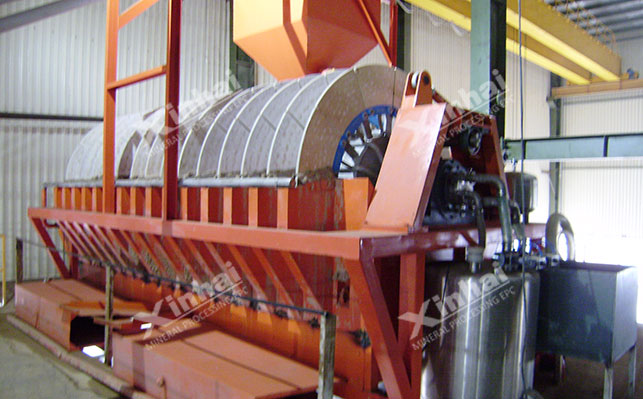Magnetite and quartz are associated, commonly known as magnetite quartzite. Magnetic separation is commonly used for the beneficiation of magnetite quartzite. During the beneficiation process, stage grinding and stage magnetic separation can be used to timely separate magnetite from quartz, avoiding resource waste caused by overgrinding. Let's take a look at the specific process flow.
Magnetite quartzite is also known as iron tunnel rock or Anshan type iron poor ore, which is mainly distributed in Anben, Wulan, and eastern Hebei areas in China. The ore mainly contains magnetite and quartz. According to the magnetic properties of magnetite quartzite, magnetic separation is generally carried out using a large difference in the magnetization of magnetite and quartz. Typical cases of this type of concentrator include the American Eli concentrator, Mintuck concentrator, Canada's Adams concentrator, the former Soviet Union's Kursk Ore Company, and China's Dashi Henan Fen and Dagushan concentrators.

(1) Crushing
The separation process of magnetite quartzite is to undergo three to four stages of crushing to 25 to 15 mm, with a jaw crusher for coarse crushing, and a cone crusher for medium and fine crushing, to control the particle size after crushing to about 15-25 mm. It can also be crushed to 350~250mm through a stage, and then grinded by an autogenous mill. This is because the crusher of the self grinding mill is relatively large and can complete all the work from second and third stage crushing to grinding.
(2) Stage grinding stage magnetic separation
Generally, three stages of fine grinding are used before entering multi stage magnetic separation. The process characteristic of magnetite quartzite beneficiation is the adoption of a stage grinding and magnetic separation process, in order to discharge individual gangue in stages and reduce the grinding amount in the next stage.
Quartz sandstone is a consolidated sedimentary sandy rock, with siliceous cements mainly consisting of opal and chalcedony, and associated minerals often containing traces of tourmaline, magnetite, ilmenite, and rutile in addition to a small amount of feldspar, mica, and clay minerals.
In production, the process of scrubbing desliming, grinding, magnetic separation, classification, and acid leaching is often used for quartz sandstone beneficiation.
Mechanical scrubbing is used to control the water mineral ratio between 50% and 70% to effectively reduce the content of aluminum oxide and iron in quartz sandstone. The coarse product after ore washing and desliming enters a ball mill for grinding operations, and the products above and below the screen are dried and weighed to obtain the next step of magnetic separation products.
Subsequently, magnetic separation operations are used to separate strong magnetic minerals (such as magnetite, titanomagnetite, pyrrhotite) and medium magnetic minerals (such as ilmenite, pseudomorphic, and semi pseudomorphic hematite). Finally, pickling operations are used to eliminate impurities that are difficult to dissolve in water but soluble in acid, such as metal oxides and fine silicate minerals. Mixed acids consisting of hydrochloric acid, nitric acid, sulfuric acid, and hydrofluoric acid are often used.
The above is the beneficiation process for magnetite and quartz associated minerals. In addition, quartz sand and feldspar separation, quartz sand aluminum removal, and other processes are difficult to purify quartz sand. Controlling the content of various magazines within a qualified range is the top priority in order to meet the product standards for high purity quartz sand.